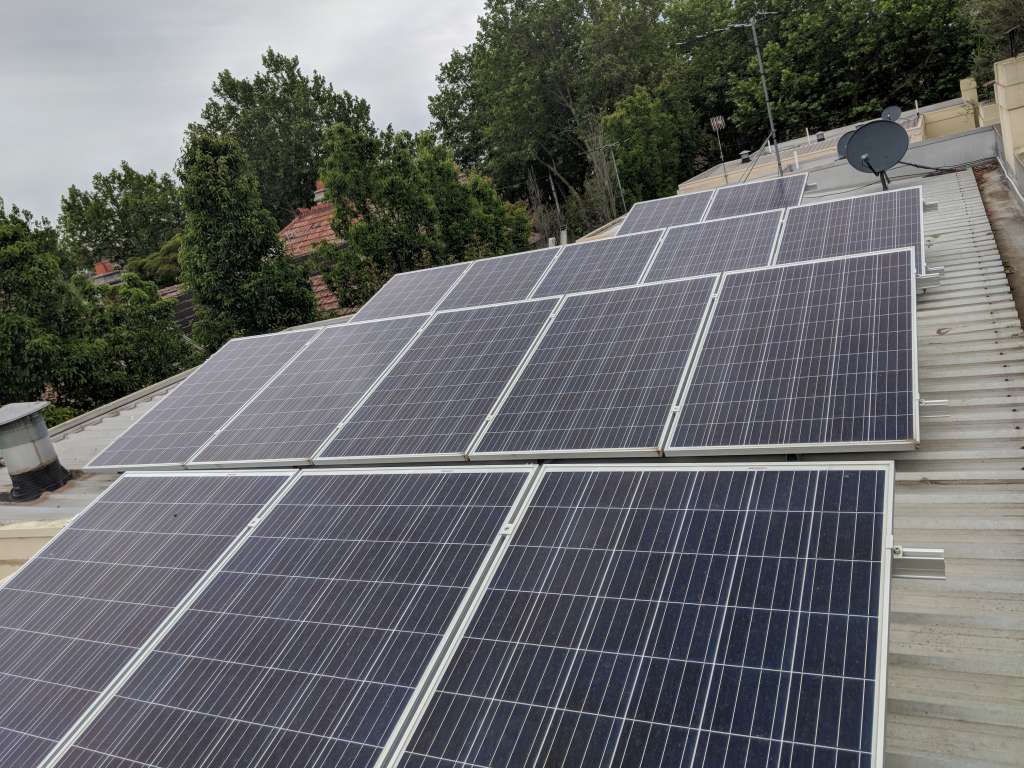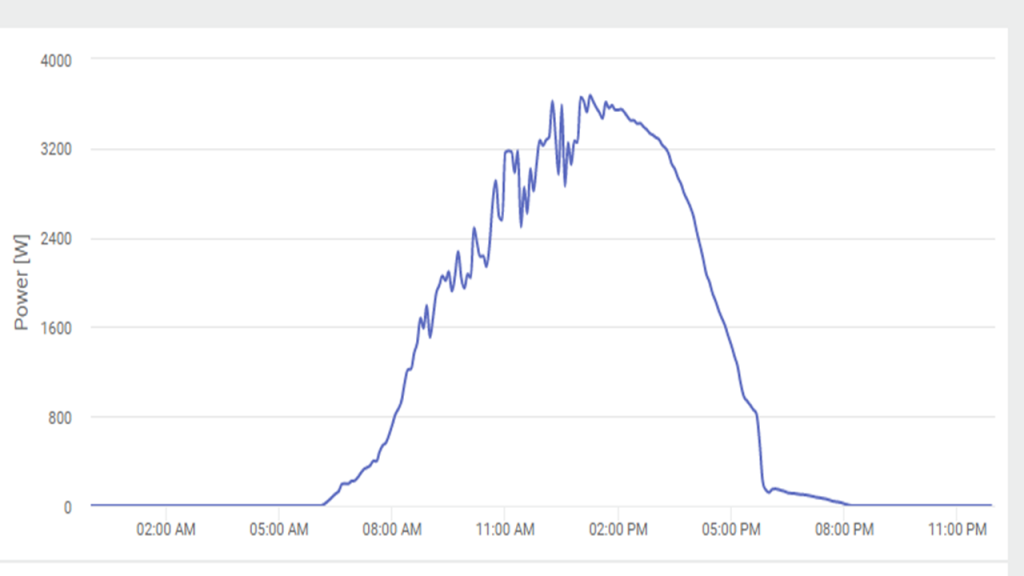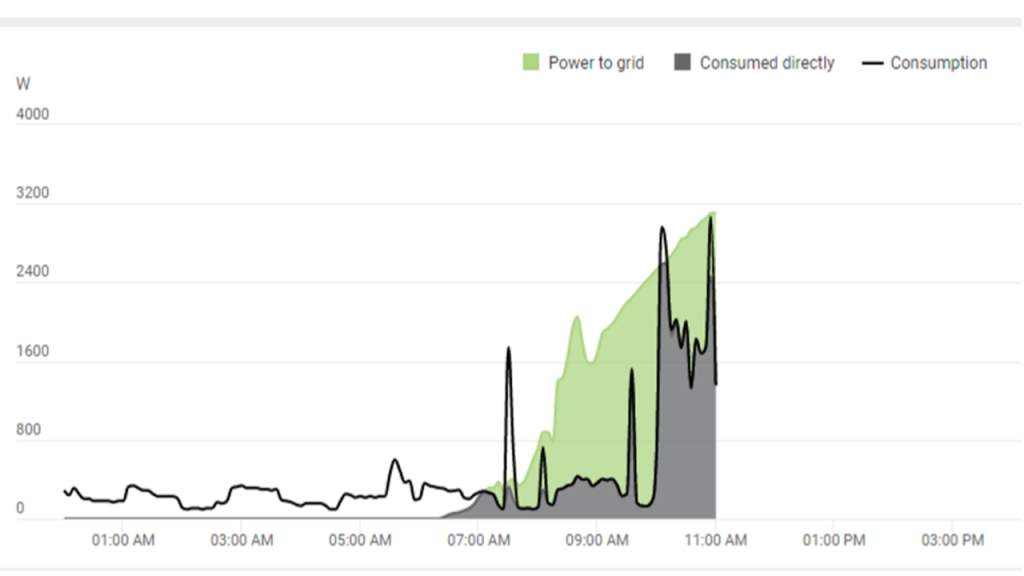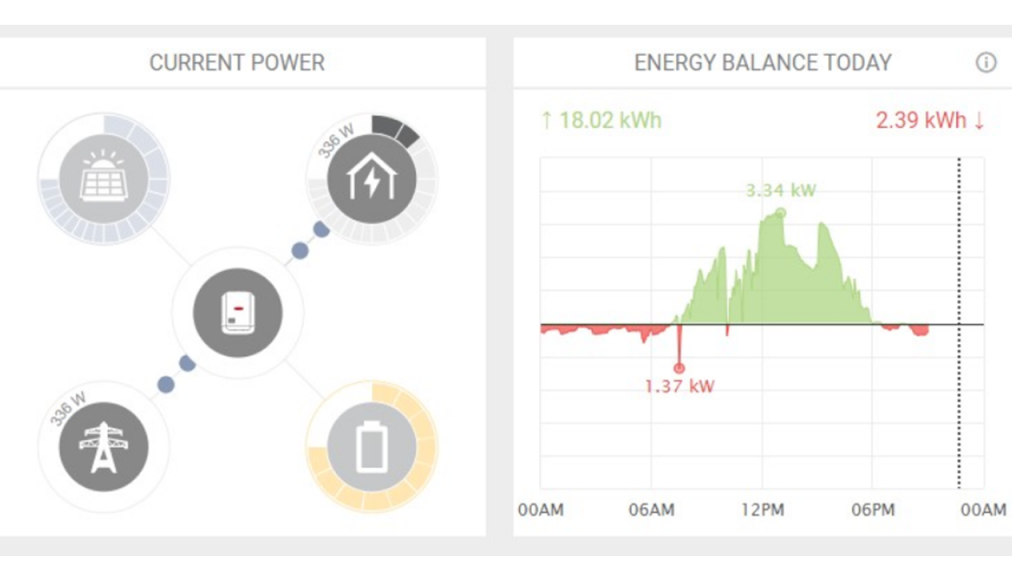Manage your solar power better by running your heating, cooling and hot water during the day when you have solar power. The energy generated from heating and cooling will be stored in the thermal mass of your house then released at night. This works better with thermally efficient houses with high thermal mass.
There are about 11 million homes in Australia and over 4 million of these have solar power. That’s a huge power generating capability. However, we need to better manage our power demand to help balance the grid and save money as well .
Therefore, run your discretionary appliances during the day with abundant solar power. Also, consider batteries to shift power from supply peaks during the day to demand peaks in the evening and early morning.
Explore government incentives and low cost loans available to encourage the development of all-electric homes with solar power, batteries and energy efficient appliances:
Supply and Demand
Melbourne example, 3.7kW solar system of 15 panels
- Average power produced is 20kWh in summer
- Provides a lot of the power needed
- With major appliances off, demand is 0.3kW
- Available day power can be over 3kW for 5 hours
- Power price is 23 cents per kWh
- Feed-in tariff is 8 cents per kWh
- Better to use the power than feed-in to the grid
- Run major appliances during the day if possible


This image shows what this power production looks like on a sunny day in Melbourne in summer.
Production exceeds 3kW from 11:00am to 4:00pm.
On a cloudy day it is more variable than this and on a rainy day, power production is much lower.
Manage your solar power better by turning on your major appliances in the middle of the day, as far as possible.
Appliance Demand
Apart from LED lights and electronic equipment, the power demand from appliances falls into two groups:
1kW (approx.) appliances:
- Refrigerator
- Freezer
- Heat pump water heater
- Washing machine
- Toaster
2kW (approx.) appliances:
- Oven
- Microwave oven
- Electric stove
- Kettle
- Coffee machine
- Clothes iron
- Hair dryer
- Dishwasher heating/finishing cycle
- Clothes dryer
Do a maximum power demand assessment to determine if you have sufficient power for your appliances to run efficiently and effectively.
Reduce Power Demand
If possible, time your heavy demand appliances to come on during the day at different times with your 2kW appliances timed for the middle of the day.
Focus on appliances that can be timed during the day without loss of utility such as:
- Dishwasher (start 8:30am, element on 10:30am)
- Washing machine (start 11:00am, off 12:00noon)
- Clothes dryer (start 12:00noon, off 1:00pm)
- Heat pump water heater (start 1:00pm, off 4:00pm, warmer air also for greater efficiency)


Supply & Demand Profile
On a sunny Melbourne day in December, with house empty and just timed appliances operating, the demand profile may look like this:
- Feed-in power supply across the day was 18kWh
- Demand from the grid was 2.4kWh
- Timed appliances operated within the curve of power production reducing the feed-in power
- Room for more appliance use during the day
